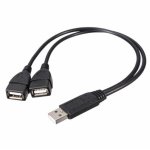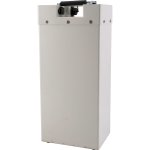they should be at the same voltage before you connect them together.
if they aren't, then the higher voltage one will immediately pour current at the highest possible rate for the difference in voltage and the total resistance between the cells in one and the cells in the other, into the lower voltage one as soon as it's connected, possibly destroying the bms of one or both by overheating the fets on the charge port, if that current is higher than they are rated for.
since fets often fail shorted, not open, then the bms can "silently fail", so that it now can no longer stop charging from happening even if the cells are overcharged and telling the bms to stop. it's silent because you have no idea this has happened, until something goes wrong inside a cell because of it and there is a fire.
whether any of this happens or not depends on many things, which you dont' have control over, other than ensuring they are always the same voltage before connecting them together, and never connecting them together if they are different voltages.
also, if they have separate charge and discharge ports on the bms, you need to disconnect the discharge ports from each other during charge, if they were connected before, or the bms cannot prevent overcharging because current will still feed in from the other pack that's still charging thru the discharge connectors of each pack.
if they have the same port on the bms for charge and discharge, it doesn't have that problem.
there are numerous other threads about parallel charging (and discharging) batteries that you can look up and read that have similar info, and probably more detail, and probably more info about other issues i didn't think of in the couple minutes i typed this up.








